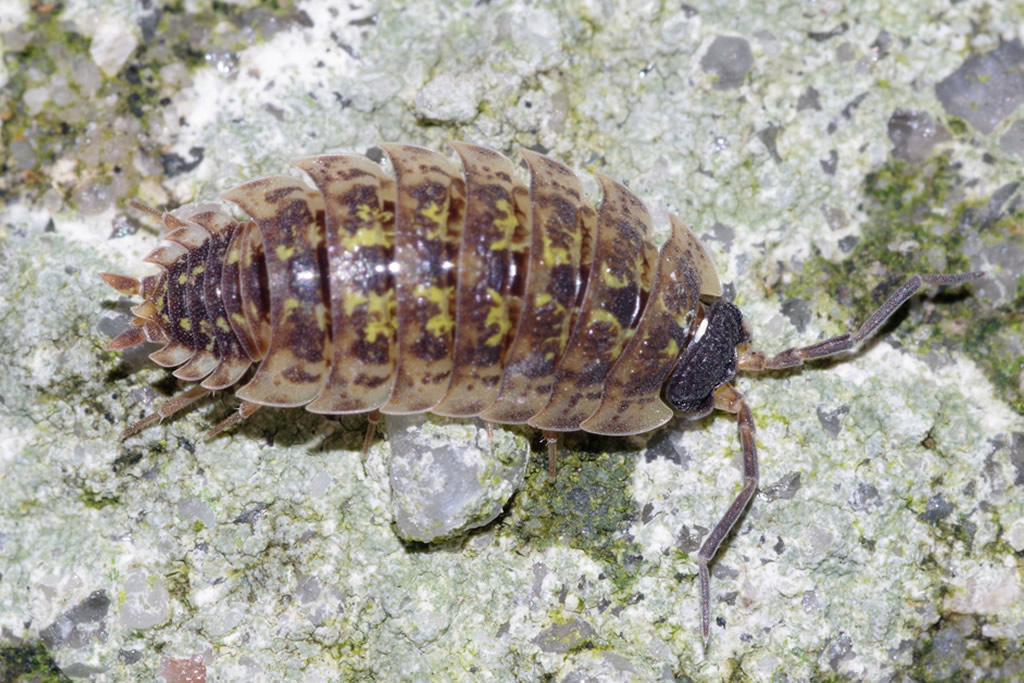Porcellio spinicornis Say, 1818
Common name
Synonyms
Porcellio pictus Brandt in Brandt & Ratzeburg, 1831
Status:
GB IUCN status: Least Concern
ID Difficulty
Identification
Porcellio spinicornis is a large woodlouse reaching 12 mm in body length. There is normally a dark central stripe, bordered by a strongly contrasting attractive yellow mottling, to give a characteristic longitudinal pattern. This is quite distinct from the random mottling seen in P. scaber. In addition the head is typically dark, contrasting with the paler body colouration.
Confusion is, perhaps, most likely with Oniscus asellus, but all Porcellio spp. are distinguished by having two flagella segments and two pairs of pleopodal lungs (three segments and no lungs in O. asellus).
Distribution
Porcellio spinicornis occurs widely throughout Britain and Ireland and is locally frequent (but remains under-recorded in many areas).
Habitat
It favours dry, relatively exposed, calcareous substrates. Typically, this is dry limestone or loosely mortared walls, but also quarries, cuttings, cliffs, limestone pavement, and occasionally on trees with calcareous bark (such as Apple Malus or Lime Tilia). It is often associated with human habitation and frequently ventures indoors.
It can be found on walls by lifting capping stones or amongst rubble and beneath stones lying on hard calcareous substrates. It can be much easier to find at night (torch-light surveys) when it is active on the surface.
This summary is based on the detailed account in Gregory (2009).
References
Gregory, S. (2009) Woodlice and Waterlice (Isopoda: Oniscidea & Asellota) in Britain and Ireland. Field Studies Council/Centre for Ecology & Hydrology.
Links
World List of Marine, Freshwater and Terrestrial Isopod Crustaceans: https://www.marinespecies.org/isopoda/aphia.php?p=taxdetails&id=262451













